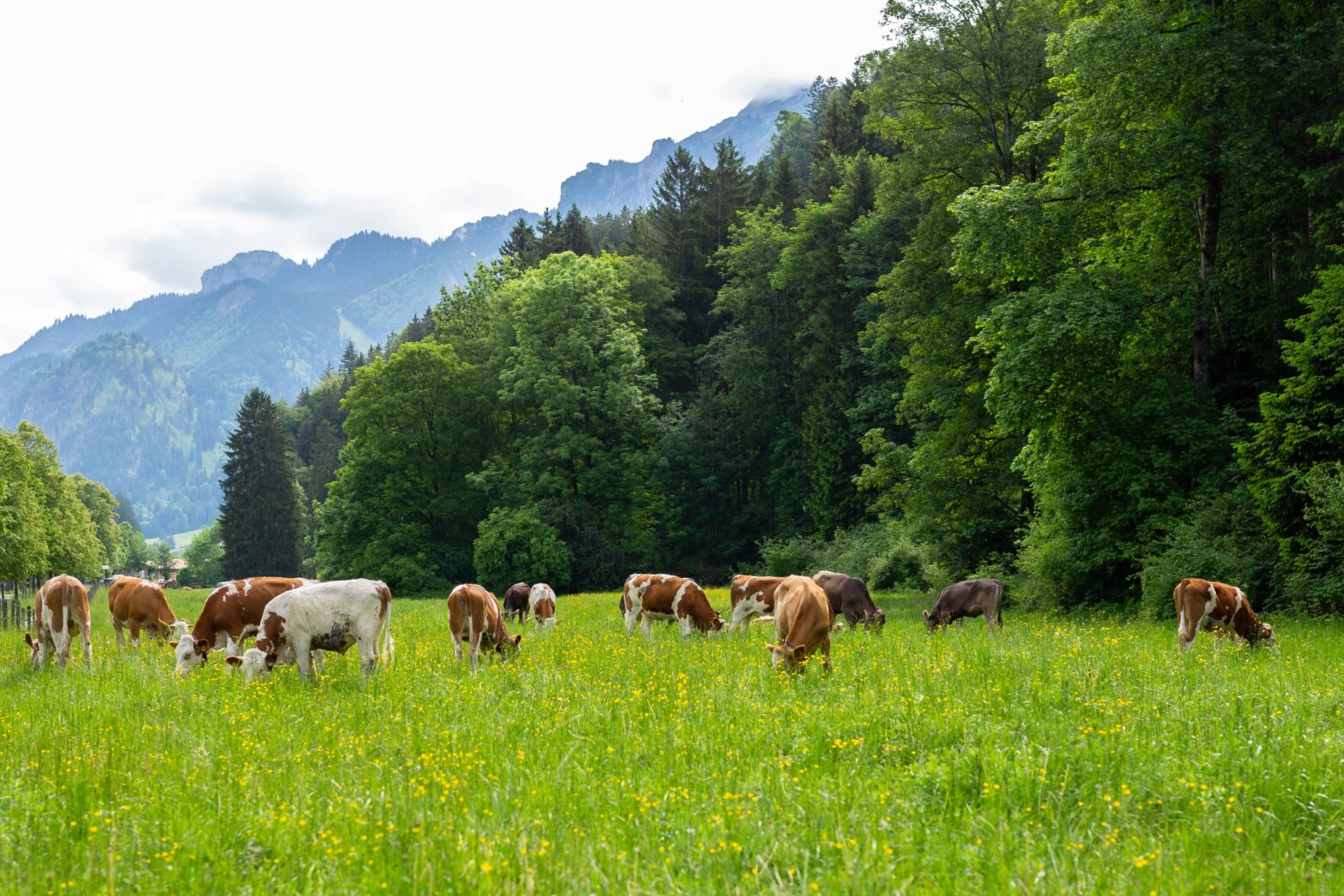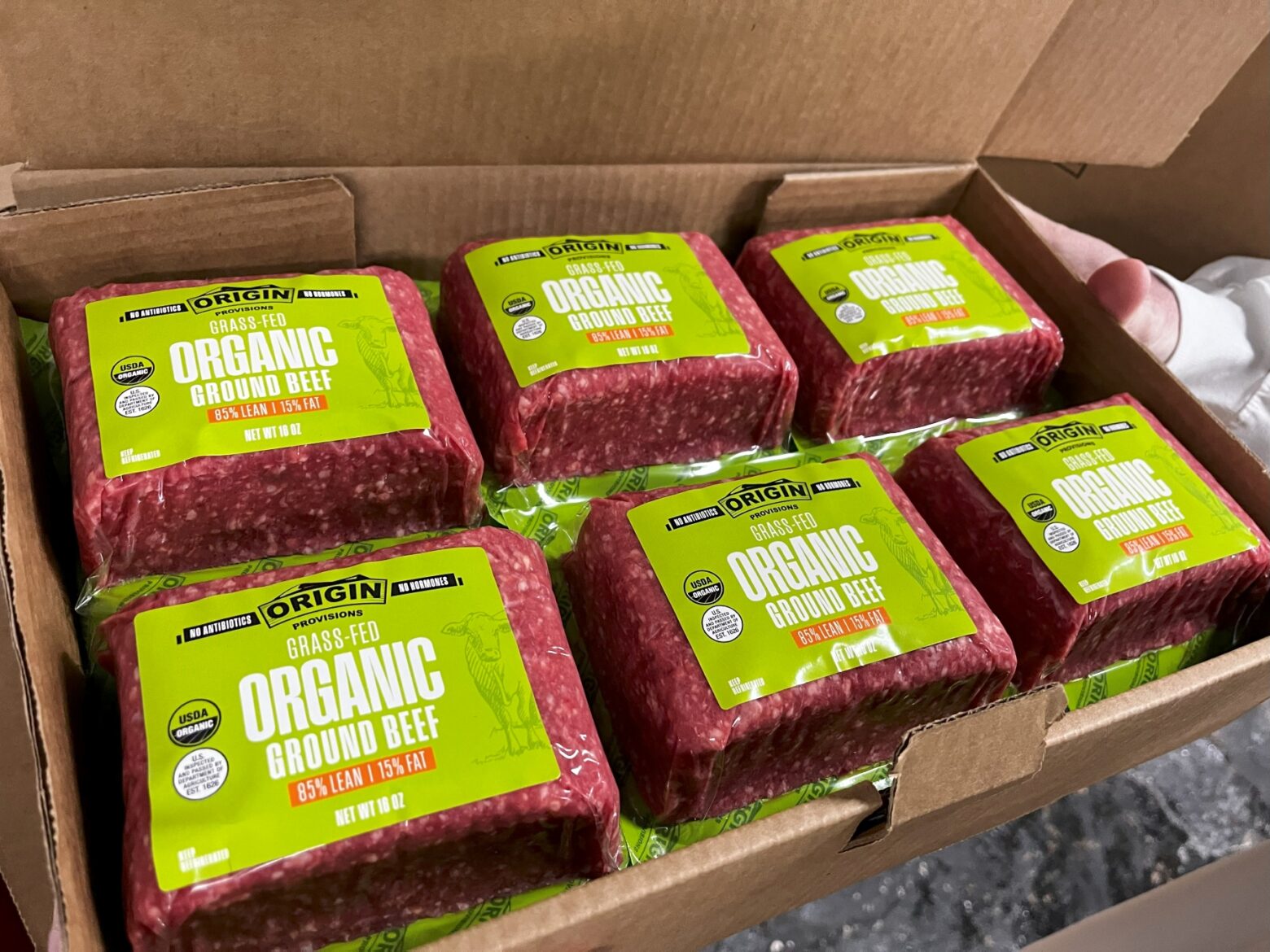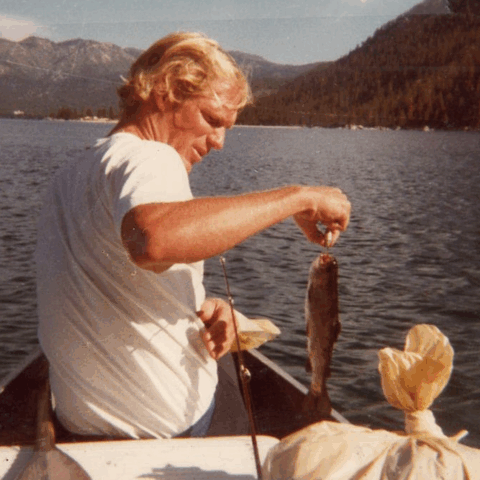How Grass-Fed and Regenerative Meat Is More Nutritious Than Conventional Beef

Pick up a package of beef at your local market, and chances are it will carry a label like “grass-fed,” “certified organic,” “Angus,” or perhaps “natural.” These tags offer a sense of assurance, but don’t be fooled into thinking they tell the whole story. The meat on your plate is only as nutrient dense as the ecosystem that fed it, and the way bison or cattle graze. And that’s where this story of regenerative meat begins—under our feet.
A steak’s nutritional value isn’t stamped on a label. It’s rooted in where the animal grazed, how it lived, and even what breed it belonged to. Cattle or bison raised on diverse, well-managed grasslands produce meat that is higher in omega-3 fatty acids, antioxidants, vitamin E, and phytonutrients such as carotenoids and phenols.1,2 By contrast, conventionally raised cattle—finished on grain in feedlots—deliver higher total fat, fewer omega-3s, and a more inflammatory omega-6 to omega-3 ratio.
| NUTRIENT CATEGORY | BISON | GRASS-FED BEEF | CONVENTIONAL BEEF |
|---|---|---|---|
| Omega-3 Fatty Acids | 0.04-0.05 g (high) | 0.03-0.04 g (moderate to high) | 0.01-0.02 (low) |
| Omega-6 to Omega-3 Ratio | ~2:1 (favorable) | 3:1 to 4:1 (good) | 10:1 to 15:1 (poor) |
| Conjugated Linoleic Acid | High | High | Low |
| Total Fat | 2.4 g (low) | 6.3 g (moderate) | 15 g (high) |
| Saturated Fat | Low | Moderate | High |
| Monounsaturated Fat | Moderate | Moderate | High (oleic acid) |
| Antioxidants (Glutathione, Vitamin E) | Moderate | High | Low |
| Phytonutrients (Carotenoids, Phenols) | Moderate to high (wild forage) | High (especially in diverse pasture) | Low to none (grain fed) |
| Vitamin A | Moderate | High (beta-carotene) | Low |
| Vitamin B12 | High | High | Moderate |
| Zinc | High | High | High |
| Iron | High | Moderate | Moderate |
| Calcium | Moderate | High | Moderate |
Dan Kittredge, founder of the Bionutrient Food Association and Bionutrient Institute, has a singular goal to improve the quality of the food system. He started with beef production because cattle occupy the largest land mass.
In an interview with Ken Roseboro, editor of The Organic & Non-GMO Report, Kittredge said: “What we found is that the level of life in the soil is the only thing that correlates with increased nutrition in food. The level of life in the soil does not correlate with organic, permaculture, no-till, regenerative, or local. It’s an integrated series of practices that seems to correlate, not a certification label or individual practices.”
The Bionutrient Institute studies track soil health, forage quality, animal microbiomes, and the nutritional impact all the way to human biomarkers. The bottom line: the chain of health starts at the soil and ends with us. From this author’s opinion, Kittredge is on the right track. For now, until he shifts the paradigm, there are ways to maximize the benefits of your regenerative meat choices by learning where and how animals graze, as well as about the specific breeds.
Why Bison Are Built for Nutrition
Among red meat options, bison wear a mantle of superiority not just for their nutritional profile, but for how they live. These iconic grazers roam up to 10 to 15 miles a day, moving across patchy forage landscapes that mimic the evolution of the prairie. That movement distributes seeds, breaks soil crusts, and minimizes overgrazing.
“Think of bison as the endurance athletes of the animal kingdom,” says Lydia Whitman, program manager for the National Bison Association. Jeff Martin, Assistant Professor of Bison Biology and Management at South Dakota State University, coined the moniker. In his research, he placed tracking collars on bison and found they are constantly on the move, burning energy, and building lean muscle.
Martin discovered that bison’s grazing patterns create a mosaic on the landscape: small bites here and trampling there, which allows grasses and forbs to recover and flourish. Broadleaf, non-woody forbs with soft stems and showy flowers provide food and habitat for a living, breathing grassland that cannot be mimicked by agriculture.
“Knowing all of this, it’s no surprise that bison meat is lower in total fat and calories than even grass-fed beef, and much richer in iron, B12, and healthy omega-3s,” says Whitman. “Through the years, producers have learned that ‘less is more.’ Handling the animals as little—and as humanely—as possible results in a healthier animal, and a better meat product,” she says.
Grass-Fed Cattle Are Partners in Regeneration
Bison aren’t the only stewards of regenerative meat. When cattle are raised right, rotated through biodiverse pastures, and allowed to move and forage naturally, they can offer similar benefits.
Rotational grazing mimics wild movement, with cattle moved regularly across land patches. This prevents overgrazing, aerates the soil with hooves, and deposits manure to feed the microbial life beneath. Pastures filled with clover, vetch, chicory, and native grasses serve a dual purpose: they nourish cattle and enrich the meat they produce with antioxidants, omega-3s, CLA, and vitamins A and E (see the chart above for details).3,4
Certified grass-fed beef is from cattle that range and are raised on a diet of only grass and forage (like hay) from weaning until harvest, with no grain or grain byproducts. Certification from groups like the ones listed below ensures that the beef meets specific standards regarding the animal’s diet and living conditions, often including access to pasture during the growing season and the absence of antibiotics or hormones.
- American Grassfed Association (AGA)
- Certified Grassfed by A Greener World (AGW) (U.S. and Canada)
- Canadian Roundtable for Sustainable Beef (CRSB Certified)
Grass Fed Reaching New Economies of Scale
Until recently, a significant barrier for grass-fed beef was cost. Origin Provisions aims to address this by offering grass-fed meat at a price comparable to conventionally produced brands.
“We’re going to the middle Americans who have been priced out,” says Chris Kerston, a co-founder of the company. “Consumers know about grass-fed and regenerative agriculture. They don’t always see it in their stores, and when they do, they feel like they can’t afford it.” Origin Provisions is solving this by running a business with low margins for grass-fed and regenerative meat at a scalable price.

How can they do this? The first step is sourcing 100% grass-fed beef from countries like Australia and Uruguay, which have never adopted a feedlot system. The meat is processed and vacuum-sealed into equally sized portions in the U.S. before being shipped fresh and case-ready to stores. Steaks are sold in 8-ounce portions for about $12.99/pound and under, while ground beef is available in pound packs for about $6.99 and under.
Kerston says that the U.S. cattle herd size is at a 70-year low, which is why prices are so high. “Our goal is to be able to have middle America families feed their kids steak again, which may be the first time since COVID,” he says.
Leaner Cattle Breeds for Health
Breed also plays a role in nutrition and regeneration. Highland cattle, for example, are small, shaggy, and remarkably hardy, producing lean meat high in iron and B12 when raised on rough, open pastures. Dexter and Hereford breeds, often used in small-scale or heritage farming, also yield nutrient-dense meat, particularly when the animals are fed on diverse, polyculture forage.
Piedmontese is a breed you may not know, but it’s one you should. Originating in the foothills of northern Italy, these cattle carry a unique myostatin gene that results in “double muscling” for tenderness and a surprisingly lean profile.5 Piedmontese beef contains more protein per gram than conventional beef,6 yet significantly less total and saturated fat for exceptional nutrition.*
For nutrient-dense, regenerative meat on our plates and resilient ecosystems under our feet, look past the marketing claims. It’s not enough to ask: What kind of meat is this? We should also ask: How did this animal live? What did it eat? How did it move? And perhaps most importantly: What kind of land did it leave behind? Because in the end, better meat isn’t just about a better burger. It’s about regeneration, from the soil to the animal.
*The Paleo Diet works in partnership with Certified Piedmontese, a beef brand of Lone Creek Cattle Co. This U.S.-based producer of Italian heritage Piedmontese beef is recognized for its approach to cattle ranching, which ensures traceability, environmental sustainability, humane handling, and responsible resource management. For more on how The Paleo Diet certification programs for beef and bison align with regenerative and nutrient-dense bison and cattle practices, click here.
Resources
- USDA FoodData Central – Bison, ground, grass-fed, cooked
https://fdc.nal.usda.gov/fdc-app.html#/food-details/172242/nutrients - Leheska JM et al. (2007), Journal of Animal Science – Nutrient comparison of grass-fed vs grain-fed beef doi.org/10.2527/jas.2007-0565
- Andrews et al., Fatty Acid Profiles in Grass-Fed vs Grain-Fed Beef: 30-Year Meta-Review
https://pubmed.ncbi.nlm.nih.gov/19453205/ - Evans N, Cloward J, Ward RE, et al. Pasture-finishing of cattle in Western U.S. rangelands improves markers of animal metabolic health and nutritional compounds in beef. doi:10.1038/s41598-024-71073-3
- Fiems LO. Double Muscling in Cattle: Genes, Husbandry, Carcasses and Meat. Animals (Basel). 2012;2(3):472-506. Published 2012 Sep 20. doi:10.3390/ani2030472
- Certified Piedmontese Official Lab Analysis. (2025). Piedmontese.com. https://www.piedmontese.com/about_nutrition.aspx
Kimberly Lord Stewart
Kimberly Lord Stewart is an author, journalist, and culinary expert. Her work highlights the importance of incorporating whole foods into daily diets and emphasizes the connection between food and overall well-being.
More About The Author


